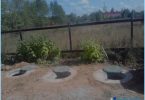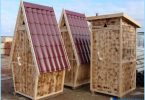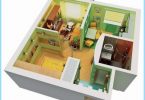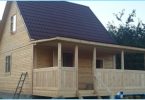The contents
- Diagram of domestic sewage
- What pipe for domestic sewage to choose?
- Laying of pipes. Observe the slope
Without sanitation life in a private home it’s hard to call comfortable. Usually it is mounted on the stage of construction of the house. However, there are exceptions when owners, for whatever reason, are forced to return to her strip later, when the house is already built. The gasket will be more difficult and will entail additional costs. For example, will have to lay internal sewers, based on the current layout of the house and not always get all tubes to embed in one sewer line or a sewer riser. But everybody associated with the installation issues can be resolved correctly when certain requirements are met. After that level of comfort in a country house will be different, and the environment damage will not be caused.
Experts also recommend to connect to Central sewer, if available. The connection will cost more, but in the future it will remove almost all problems. And now we will focus on the local (private) sewer system, which also consists of inner and outer.
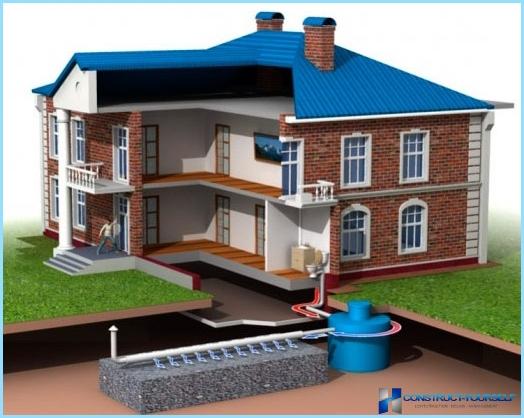
Installation of internal Sewerage ↑
Work on laying of internal Sewerage include:
- Installation of riser.
- The distributing pipes to the plumbing on the premises.
- Installation of the sewer pipe. Sewer pipe maintains a stable atmospheric pressure in the sewage system, connecting the riser with the atmosphere, and prevents the creation of vacuum on the descent on the riser wastewater. A vacuum is fraught with entering the premises of odors from the riser, because «water castles» the siphons will be drawn into the riser. It is usually installed in houses with two or more floors, or two (or more) bathrooms.
Scheme internal drainage ↑
During project development, private home accommodation facilities, which is necessary to bring the sewer is usually carried out in the same area on each floor. This layout simplifies the construction of sewer pipes. However, for each home sewage system is designed individually.
For the installation of sewer in the house already built to order project solution is quite expensive. The scheme of internal sewers you can make your own. Of course, the scheme you will not be able to develop as detailed and professional as preparing section «Sewerage» in house project. But it will help you to lay the sewer line or to mount the riser, and calculate equipment requirements and materials.
Stock up on a tape measure, a pencil and a plan of the house. If a house plan to scale you have, measure out all the distances and put them on a paper graph paper. Determine the location of the sewer pipeline or riser (the risers), as well as plumbing items. Note on the chart fittings (for tubing) and the distance from fittings and riser to the plumbing. With fittings you can change the diameter and direction of pipelines. Count the number of the required connecting elements. This work needs to be repeated on each floor.
The diameter of the riser or sewer pipeline (sunbed) and the diameter of the release of sewage from the bathroom is 100-110 mm. For waste water from kitchen and bathroom (called gray) is used, the pipe diameter of 50 mm. the Rotations in the Sewerage system to avoid blockages by two arranged at an angle of 45° with the knees.
Count the need for pipes of different diameter and connecting elements, and you can get to work.

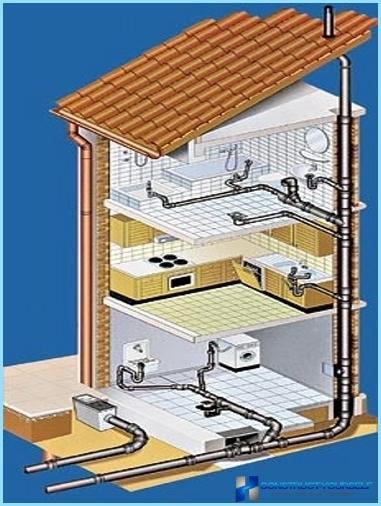
What pipe for domestic sewage to choose? ↑
For the installation of domestic sewer use cast iron, polypropylene (PP) or polyvinylchloride pipe (PVC). Cast iron can be called «classics» of the genre, they are able to withstand heavy loads, is durable and reliable. Today, however, popular are polypropylene and polyvinyl chloride pipes, which are recognizable grey. They are much cheaper than cast iron and the installation process is more simple. Particularly popular because of its flexibility and small weight polypropylene. Furthermore, the PP pipes can withstand high temperature wastewater. About the reliability and durability of these pipes, you can argue, but those and others will last you a long time.
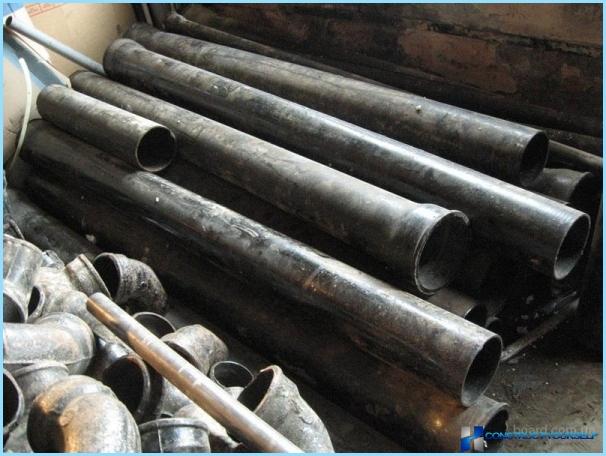
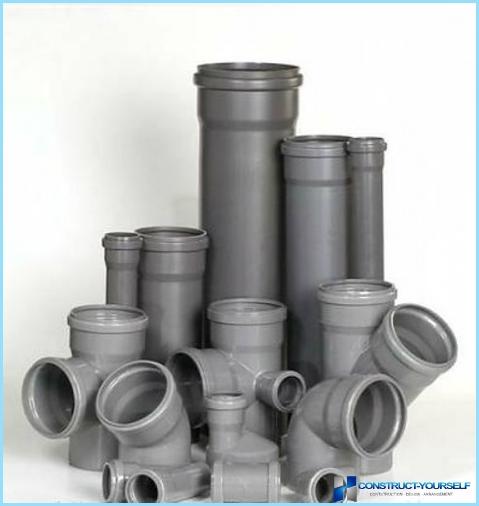
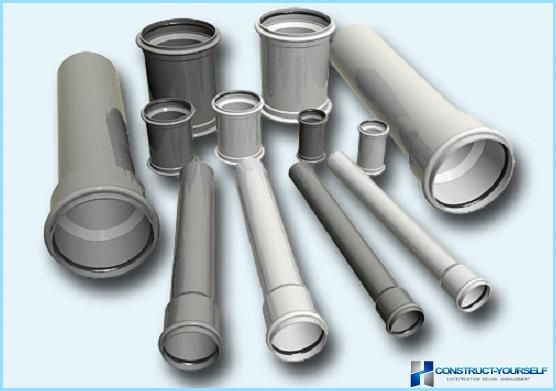
Laying of pipes. Observe the slope ↑
We will lay pipes mixed gravity sewers. On the use of sewage is divided into combined and separate, for private homes we choose a mixed. On the way out of sewage sewage is gravity and pressure. Pressure is expensive and is rarely used.
For the construction of sewer will need an assistant. One to do the job will be much harder, and it will go slower. Buy polypropylene pipes of diameter 50 and 100 mm, elbows, tees and audit. Sleeve, we will need to install in places where the system passes through a ceiling or wall. The joints, in addition to mandatory use of rubber cuffs, further isolate plumbing sealant.
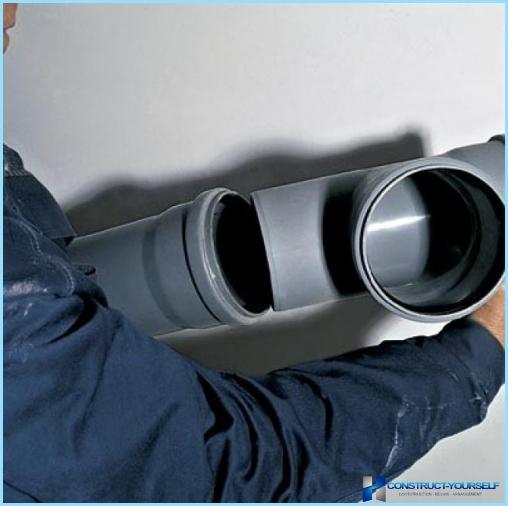
Getting started, remember that sewer pipe in accordance with SNiP must be placed under bias. Slopes for inner, outer and stormwater are different. For the internal gravity slope is 2 to 3% depending on pipe diameter. Slope of 2% is the slope of 2 cm to 1 p. m. For pipes of smaller diameter, the slope shall be 3%. Without observing this rule, we do not mount a functioning internal drains.
Bias is impossible to do less than 2% and not to exceed 3%. In the first case in gravity sewers, the solid particles will remain on the walls of the pipes and cause clogging. In the second, will exceed the maximum permitted effluent flow rate in polypropylene tubes, which will lead to the division of wastewater into fractions and settling of solids.
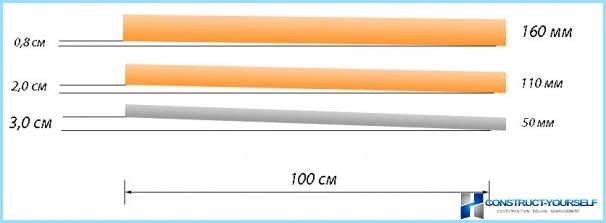
To work on the strip we will need:
- Pipes: polypropylene, diameter 100 and 50 mm.
- Elbows, tees and audit in accordance with the scheme of sewage.
- Sleeve.
- Clamps for mounting of pipes to the walls when laying.
- Rubber cuffs.
- Glue.
- Soldering iron (PVC pipe connect with glue or rubber seals).
- Punch.
The work is recommended to start with release – the junction of the inner and outer pipes. Starting the installation with the issue, will avoid inconsistencies between the two systems. The release is mounted through the Foundation. If the installation is carried out at a depth less than the depth of frost penetration in the region, an insulation tube. Otherwise, the output will freeze until spring and you will be without sewer.
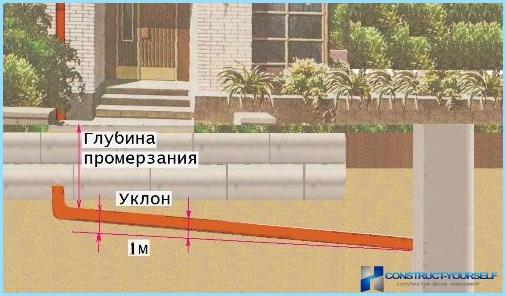
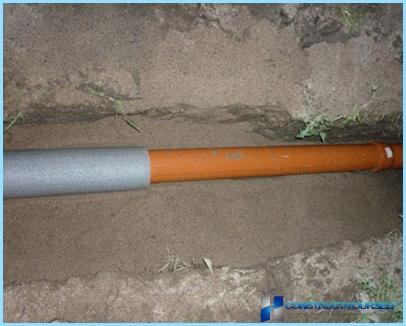
If the Foundation was not provided by the outlet, it will have to break. The diameter of the sleeve (the piece of pipe larger than the release diameters of approximately 130 mm). Supports the sleeve on each side of the Foundation at least 150 mm. Hole and installing the liner it is necessary to do so to provide a slope of 2% for exterior sewer leading to the septic tank. The diameter of the release must be equal to the diameter of the riser. In our case 100 mm.
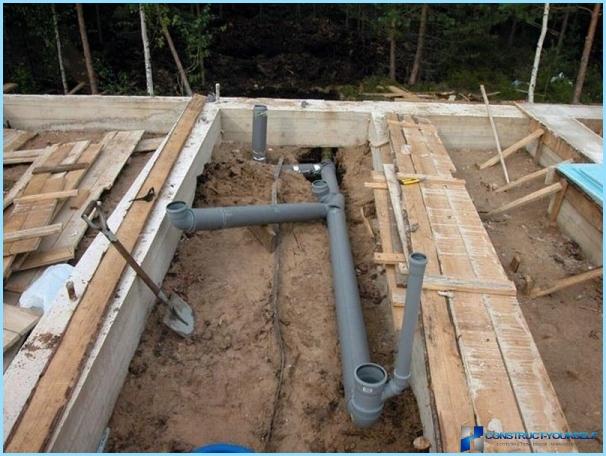
When selecting a location for installation of the riser, try to mount it in the bathroom. In this case, the issue of effluent discharge from the toilet (O 100 mm) will fit short. There is a simple rule – the larger the diameter of the release of santekhpribor, the closer it should be located to the riser.

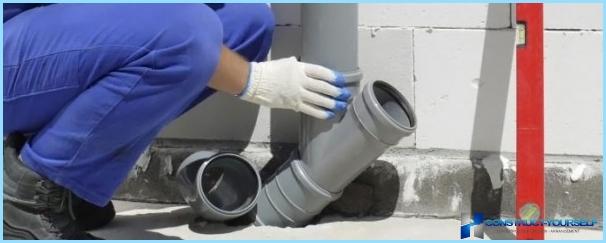
The method of laying choose yourself: in boxes, in an open way, in the walls, etc. Pipes are connected with the riser by using bias tees. If your scheme is a point of intersection of the releases from the shower, baths and sinks, this place is mounted a manifold pipe with a diameter of 100 mm, a required installation of hydraulic locks – they will protect the house from unpleasant odors.
Sewer pipe is a continuation of the riser up. First, in the place of connection is set to audit, then the sewer pipe output on the roof. It is not necessary to combine with the ventilation of the house. The output should be above the ridge of the roof (but not less than 700 mm from the roof) and at a distance of not less than 4 feet from the Windows. It is recommended to arrange the ventilation of the house, chimney and sewer pipe at different heights.
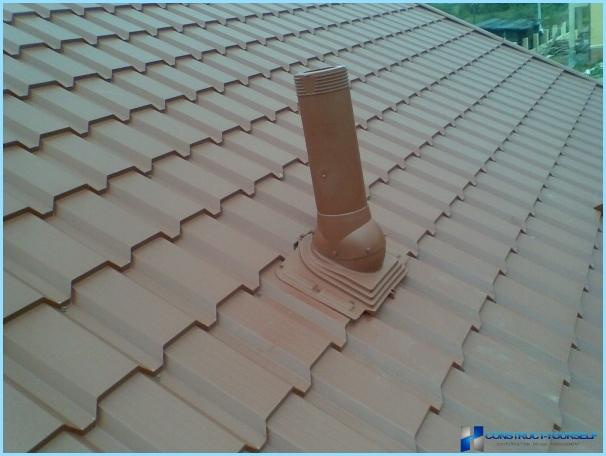
After installation, domestic sewage, it shed clean water to check the tightness of all connections.
Scheme sewage ↑
Exposed sewer is a system of pipes from the release to the septic tank or advanced treatment. For installation in underground pipes are used with great rigidity to withstand the soil pressure. Often used pipe, orange in color – they are clearly visible in the soil. Their diameter is 110 mm.
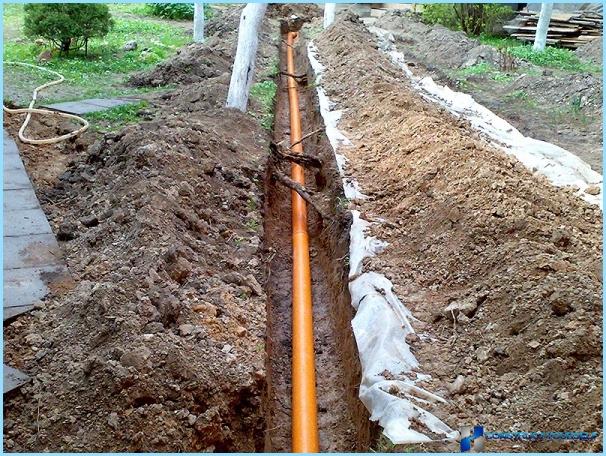
There are several systems of external sewage, however, we will not consider as possible options for the sump and sealed containers for collecting waste water (this is a cumulative system). The sump faithfully served man for hundreds of years, but in the XXI century and the need for improvement of the private homes use more modern devices, especially because at the price they are available. We are talking about the different septic tank: with filter, with two and three cameras, a simple single-chamber soil cleaning and the deep cleaning stations.

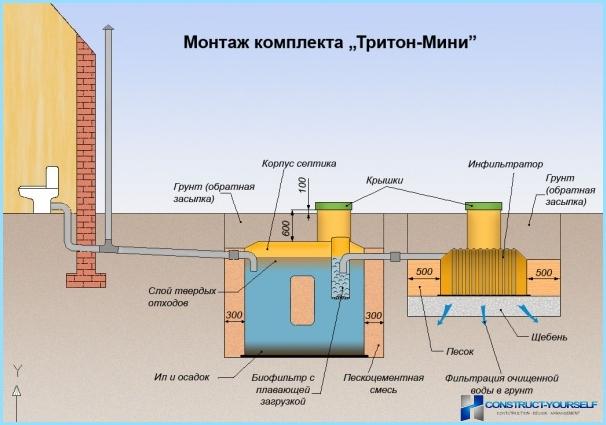
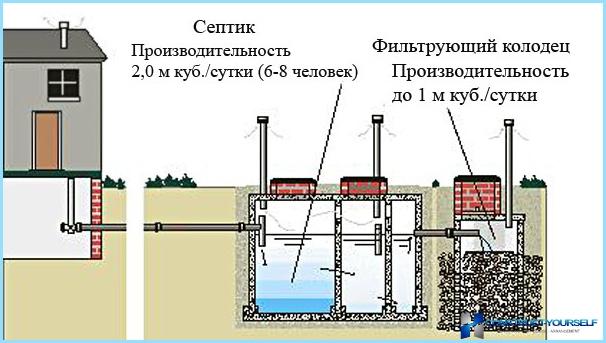
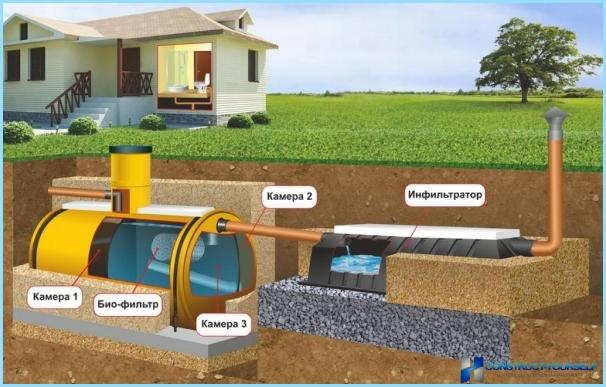
To select a septic tank, which will meet the needs of your family, it is necessary to consider the number of people living in the house, the nature of residence (temporary/permanent), the approximate daily water consumption for each family member (depending on the number of plumbing items in the house and availability of household appliances). In addition, specialists will take into account the level of groundwater in your area, plot size, which determines the size allocated for the treatment plant area, the soil type and the climate region you live in.
What type of septic tank you choose or perhaps stop at the station deep biological treatment depends on your financial capabilities. And, of course, expert advice. Pondering the decision, take into account the existing restrictions on the placement of such objects:
- The distance between the septic tank and vegetable garden should be not less than 8 meters.
- The minimum allowable distance from the septic tank to any source of water (well, borehole, reservoir) is 20 meters. And here, the principle of «the farther the better».
- The minimum allowable distance from the septic tank to a residential building is 5 meters.

The main problem in the arrangement of external Sewerage is the right choice treatment plant. Excavation and laying of you can handle effortlessly.
Two obvious conclusions. First, to design a sewage system preferably at the same time with the development of the project, and installation to implement it during the construction phase. Don’t have to batter the walls and Foundation. Second, even if you are unable to mount the sewer during construction, nothing wrong with that. Make all necessary calculations, make a diagram and business. A lot of work, but the sewers in private house with your own hands you will be able to mount.

